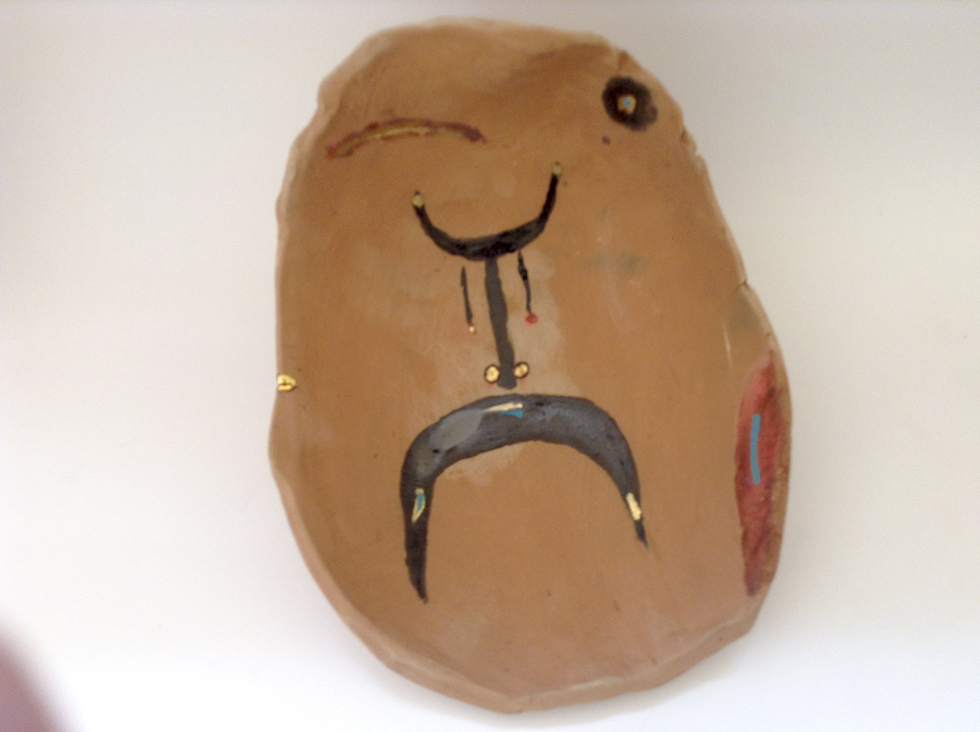SOUTH BAYMOUTH— Pottery artist José Garcia has produced an artistic series in clay that digs deep into the cultural DNA of the earth in his native Aruba entitled ‘Spirit of the Dragonfly’ and the works are currently on display at the Southbay Gallery and Guest House in South Baymouth.
The Dragonfly, explains Mr. Garcia, links the world we live in with the spirit world through its life cycle. “It moves in and out of the spirit world,” he said.
Mr. Garcia said that he dug the clay in Aruba and produced the works “only manipulating it a little, preserving its DNA. It spoke, all I have done is added the symbols.”
The symbols Mr. Garcia used in decorating his artwork was inspired by his visit to the caves of Aruba and the petroglyphs found therein.
The petroglyphs harken back to the pre-Columbian period, when the Taino people from whom he is descended travelled extensively. “We even named Aruba, Auruberei in our language,” he said. Mr. Garcia was also inspired by a United Nations publication on de-colonizing the atlas.

Mr. Garcia said that he found himself deeply disturbed by the current plight of those of Haitian descent who are being driven out of the country. “I took the opportunity to highlight the incalculable racism in the Dominican Republic in expelling Haitians,” he said. “The Dominicans all think they are (of) European descent,” he said. “They do not recognize their African heritage.”
The lack of recognition in the Western media of the plight of those of Haitian descent in the Dominican deeply disturbs Mr. Garcia.
He gives the example of the demonization in popular western culture of the Haitian religious practices, known in pop culture as “voodoo.” Mr. Garcia pointed out that the spirituality is based, much like Japanese Shintoism, on invoking the aid of ancestors in every day life. “You ask your ancestors for guidance,” he said.
One special piece in the exhibit is entitled Art and Eva Solomon, “honouring my Ojibwe family,” he said. The couple would bring Mr. Garcia clay when he starting working at the farm on which he was living. “They were incredibly supportive,” he said.
Mr. Garcia has produced a YouTube video of the collection and its process,
“I utilized an Ojibwe drum song for the background of the video,” he said.
The themes of connection and the bounds of history that link us all together run throughout the works, which will be featured as part of this year’s Manitoulin Art Tour.